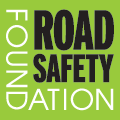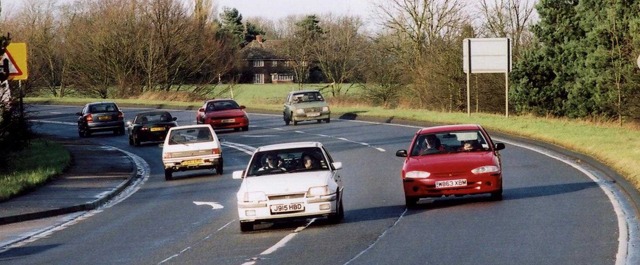BRITISH EURORAP RESULTS 2003: BRITAIN’S MOST IMPROVED AND HIGH RISK ROADS
At least 20 lives and 180 serious injuries have been saved in just two years on 13 roads identified by new AA Motoring Trust research as the most improved in Britain for safety. View report here.
The study, the latest by the European Road Assessment Programme (EuroRAP) which rates roads for risk, shows how low cost measures have dramatically reduced serious accidents.
The 13 major roads were suffering a total of 200 deaths and serious injuries per year, but after engineers introduced changes such as improvements to junction layouts, signing and road markings, and added safety barriers and speed cameras, the accident toll on most was at least halved.
The AA Motoring Trust is calling for a national effort led by government and local authorities to apply similar measures to all 370 British roads identified by EuroRAP as posing a higher than average risk to people using them. A total of 830 were rated.
John Dawson, Director of The AA Motoring Trust and EuroRAP chairman, says: “It’s easy to forget the true death toll on the roads because the accidents are scattered and usually involve only one or two people. Yet there are many people alive today thanks to the relatively inexpensive changes made on the roads we have identified.
“It’s right that billions of pounds are being spent on railway safety, which works out at around £10 million for every life saved. But we can save hundreds more people every year on the roads for just a fraction of that, and deliver massive savings to the NHS into the bargain.”
Unlike motorways, generally the safest roads, A-roads present drivers with a wide variety of hazards. Among the most lethal are trees and lampposts sited close to the carriageway edge, and junctions where simple driver misjudgements can lead to brutal side impacts. The closing speed between vehicles at the legal limit is 120mph, which makes head-on collisions largely unsurvivable, while road space is shared with vulnerable users such as pedestrians and cyclists.
The AA Motoring Trust-led EuroRAP programme – which includes governments and motoring organisations from around Europe – first published a risk rate league table for 830 major British roads in 2002, looking at accidents between 1997 and 1999. This latest study looks at how those roads performed over the next two years, between 1999 and 2001.
In addition to the most improved roads, a further 21 roads (table attached) have been identified which have posed a persistent risk to their users, having seen at least one person per mile killed or seriously injured over three years.
While many of these roads have since benefited from engineering changes from the local authorities and agencies that operate them, it will be another two years before their effectiveness can be assessed. Many other roads await any improvements at all.
John Dawson says: “It is in the national interest that we apply the lessons from this work to every problem road it has identified. Drivers clearly have a responsibility to drive sensibly, but a moment’s inattention should not carry the death sentence. It is not an exaggeration to say that with every month that goes by without improvement, people will die who could and should have been saved.”
NOTE TO EDITORS Further details about EuroRAP and its latest findings are available on line at www.eurorap.org.
Typical costs for road safety measures are: crash barrier £100,000 per 1km (cheaper per km for longer stretches); white lines £1 per metre; pedestrian refuge £2,000; safety improvements on a bend £10,000 (anti-skid surface, improved signs, new road markings etc); converting fourway junction into large roundabout £500,000; speed camera £25,000.
EuroRAP is financially supported by The AA Motoring Trust, The European Commission, The FIA Foundation for the Automobile and Society, and Toyota Motor Europe.
Motoring organisations supporting EuroRAP are: The AA Motoring Trust; AA Ireland; ACI (Italy); ADAC (Germany); Autolitto (Finland); AMZS (Slovenia); ANWB (Netherlands); FDM (Denmark); FFAC (France); M (Sweden); NAF (Norway); OAMTC (Austria); RACC (Spain); RACE (Spain); TCB (Belgium); TCS (Switzerland). Public authorities and other bodies providing technical assistance or data to the programme include: The Department for Transport, The Highways Agency, County Surveyors’ Society, Transport Research Laboratory (England); Ministere de l’Equipement des Transports, du Logement, du Tourisme et de la Mer (France); National Roads Authority (Ireland); Italian transport ministry with the Instituto Nazionale di Statistica; Adviesdienst Verkeer en Vervoer (Netherlands); The Scottish Executive; Servei Catala de Transit (Catalonia); Direccion General de Trafico (Spain); Swedish National Road Administration; National Assembly for Wales.

